15 Self Care Bullet Journal Layouts (Find Inner Peace Today)

Embrace Mental Clarity with a Self-Care Bullet Journal

Ever feel like your brain has far too many tabs open? A self-care bullet journal is like a gentle hand that helps you close all those unnecessary tabs, one by one.
It’s a simple, honest-to-goodness way to tune back into what you actually need. All it takes is a notebook and your favorite pen to start feeling a little more… you.
Think of it as your personal wellness command center, created by you, for you. It’s a private spot to untangle your thoughts, track your habits, and basically check in with yourself.
By combining organization with mindfulness, this practice allows for meaningful self-reflection and personal wellness. The journal helps you declutter your mind and focus on what truly matters.
It’s not quite a “Dear Diary” and not a rigid planner. It’s more like a super flexible sidekick that helps you notice what’s really going on in your head and your heart.
The beauty of the bullet journal method is its adaptability. It is a framework designed for you to customize, making it the perfect vehicle for self-care.
Getting Started: Your Simple, No-Fuss Setup Guide
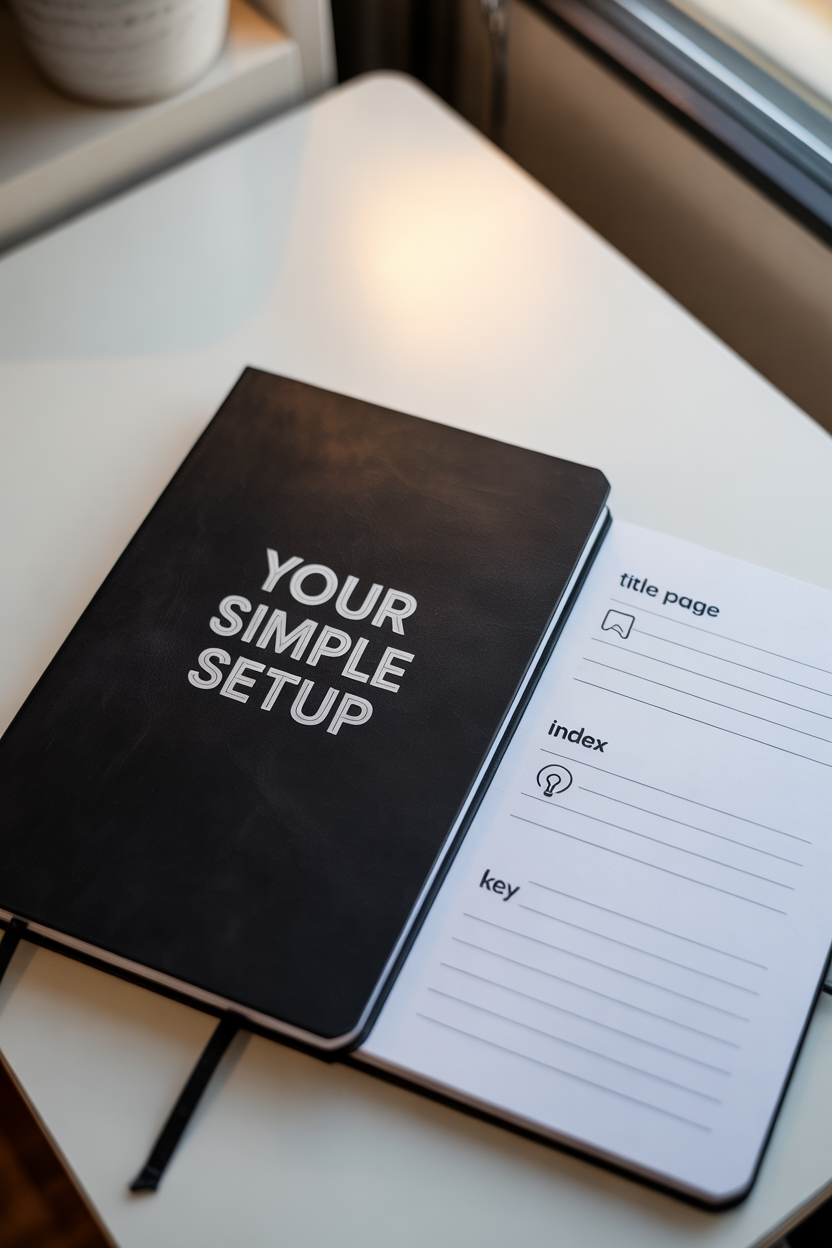
First, let’s get one thing straight: you do not need to be an artist. You’ve likely seen journals on social media that look like they belong in a museum, but that’s not what this is about.
Your self-care bullet journal is for function, not for show. If it looks more like a collection of scribbles and coffee stains, you’re doing it right!
In fact, many find a minimalist approach more beneficial for mental health, as it removes pressure and focuses on the act of journaling itself. Let’s keep it simple so you don’t get overwhelmed and hide the notebook in a drawer forever.
A few key pages can set you up for success. Start with a fun title page that makes you smile when you open it.
Next, create an Index page. This will become your journal’s table of contents, and you’ll thank yourself for it later when you’re trying to find that one brilliant thought from three weeks ago.
Finally, set up a Key. This is a quick guide to your symbols, like a heart for a good moment, a checkmark for a completed task, or a little storm cloud for a grumpy day.
Check In With Yourself Daily to Declutter Your Mind
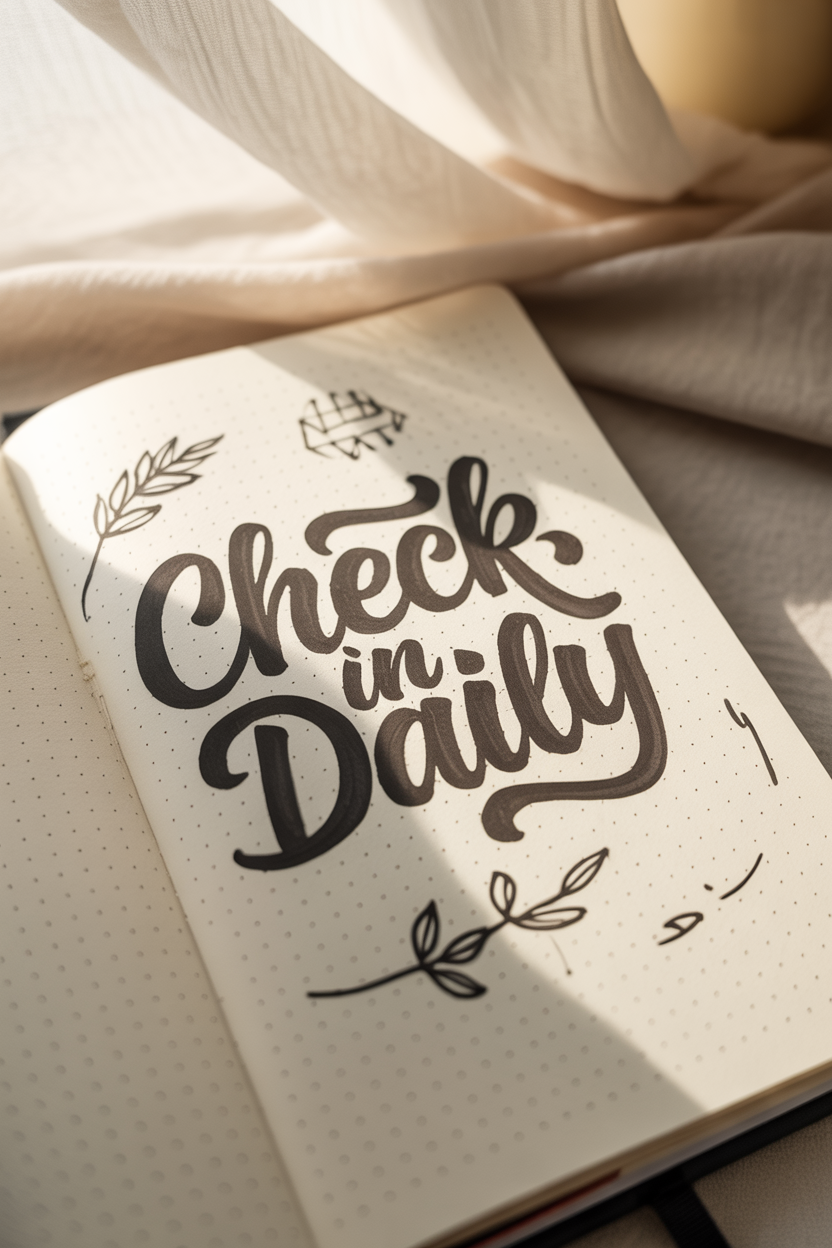
The heart of this entire practice is the daily check-in. It’s a tiny space each day dedicated to simply asking yourself, “Hey, how am I feeling?”
This simple habit is supported by mental health professionals as a great way to build self-awareness and support your mental health. A sentence or two is all it takes to start building a real connection with yourself.
Another key tool for mental clarity is the “brain dump” page. This is your official permission slip to be messy and unstructured.
A brain dump is an established bullet journal practice known for relieving stress by clearing thoughts from your mind onto paper. This is a page where you spill everything—and I mean everything—that’s floating around in your head.
Jot down your worries, brilliant ideas, that thing you need to buy at the store, and random song lyrics. It’s like tidying up a cluttered room, but in your mind.
Become an Emotional Detective with a Mood Tracker
![]()
Ever have a day where you just feel… blah? A mood tracker is like being a detective for your own emotions, helping you uncover the “why” behind your feelings.
By coloring in a little box or drawing a simple icon each day, you can begin to visualize your emotional rhythm over time. This creates a revealing at-a-glance record of your inner world.
Soon, you may start to see patterns you never noticed before. You might discover, “Oh, I’m always cranky on Tuesdays” or “I feel amazing after I talk to my best friend.”
Research shows this simple tool can help you notice emotional triggers and improve your overall wellbeing. It’s surprisingly illuminating and an easy way to support your mental health journey.
Care for Your Body by Tracking Sleep and Hydration
![]()
True self-care addresses both mind and body. Your bullet journal is the perfect place to gently track two foundational pillars of physical health: sleep and hydration.
Sleep is everything. A simple sleep log helps you track how many hours you get and, more importantly, how you feel when you wake up.
Keeping a sleep diary is recommended by experts to gain valuable insights into your sleep habits. You might finally crack the code on why some mornings you feel like a superhero and others, a very tired zombie.
It’s also shockingly easy to forget to drink water. A hydration tracker is a fun, visual game to remind yourself to sip throughout the day.
Just color in a little droplet for every glass you drink. It’s one of the most popular bullet journal pages for a reason—it’s a simple, effective way to care for your body. Your skin, energy levels, and brain will thank you.
Cultivate More Joy with a Gratitude Log and Happy List
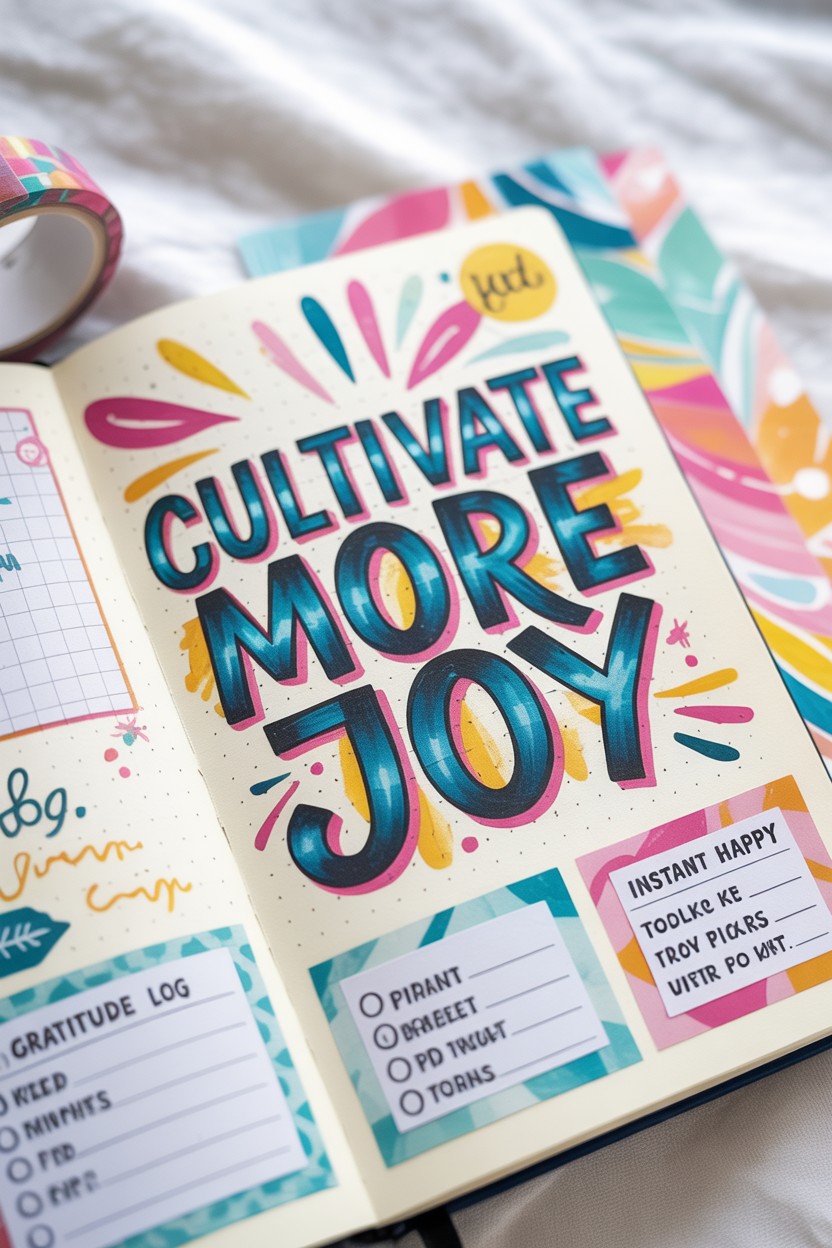
Your journal can become a simple tool to rewire your brain for joy. A gratitude log is an evidence-based practice that works wonders for shifting your perspective.
Every day, jot down one to three things you’re thankful for. And they can be tiny! “My coffee was perfect today.” “Found a parking spot right up front.” “My cat did something weird and hilarious.”
Keeping a gratitude journal is a scientifically backed way to shift your brain to look for joy and improve overall happiness.
On tough days, you can also turn to your ‘Instant Happy’ Toolkit. This is a running list of things that are guaranteed to bring you a little bit of joy.
Think of it as your emergency mood-lift kit. When you’re feeling down, you don’t have to think—just pick something from your pre-made happy list and do it.
Be Your Own Cheerleader with a Habit Tracker
![]()
Want to start a new healthy habit, like stretching for five minutes or getting some fresh air? A habit tracker is your best friend for building momentum.
It’s a core feature of bullet journaling that helps increase self-awareness and motivation. The satisfaction of filling in that little square is surprisingly motivating.
It provides a small, tangible reward for showing up for yourself. This visual proof of your effort can be incredibly encouraging.
The goal isn’t a perfect streak—it’s just about showing up for yourself more often than not. A missed day is not a failure; it’s just data.
Seeing your progress visually helps you act as your own cheerleader, gently motivating you to continue on your path.
Design a Flexible ‘Self-Care Menu’ for Any Schedule
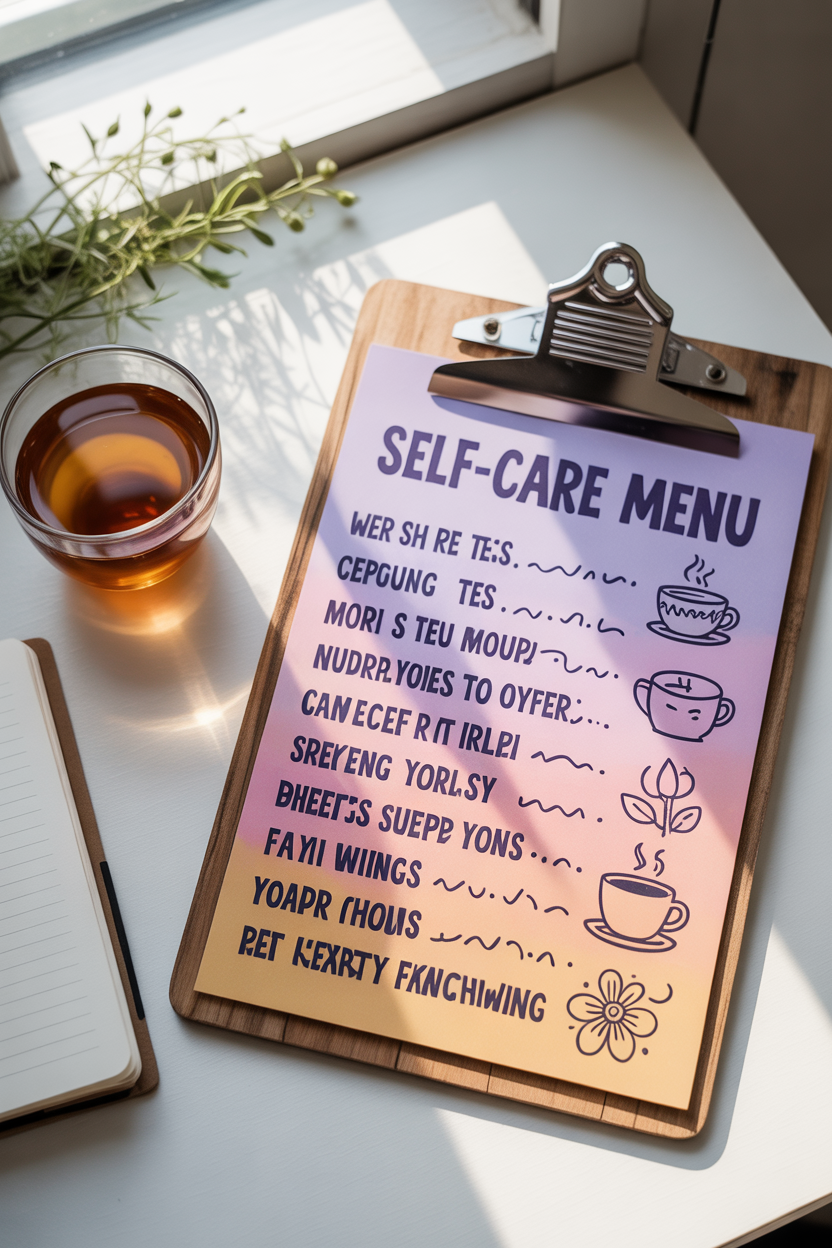
Sometimes you desperately need a little self-care, but your brain is too tired to figure out what to do. This is where a “self-care menu” becomes your secret weapon.
Create a menu of restorative options, organized by how much time you have. This makes self-care more accessible and removes decision fatigue when you need it most.
You can find lots of inspiration to build a robust list of self-care ideas that feel right for you.
Create a section for “5-Minute Snacks,” which could include a few deep breaths, a big stretch, or listening to your favorite song. Then add “15-Minute Appetizers,” like a quick walk around the block or reading a chapter of a book.
Finally, list your “30-Minute Main Courses.” These are more indulgent activities like taking a warm bath, calling a friend, or diving into a hobby you love.
Make Journaling a Guilt-Free Habit That Lasts
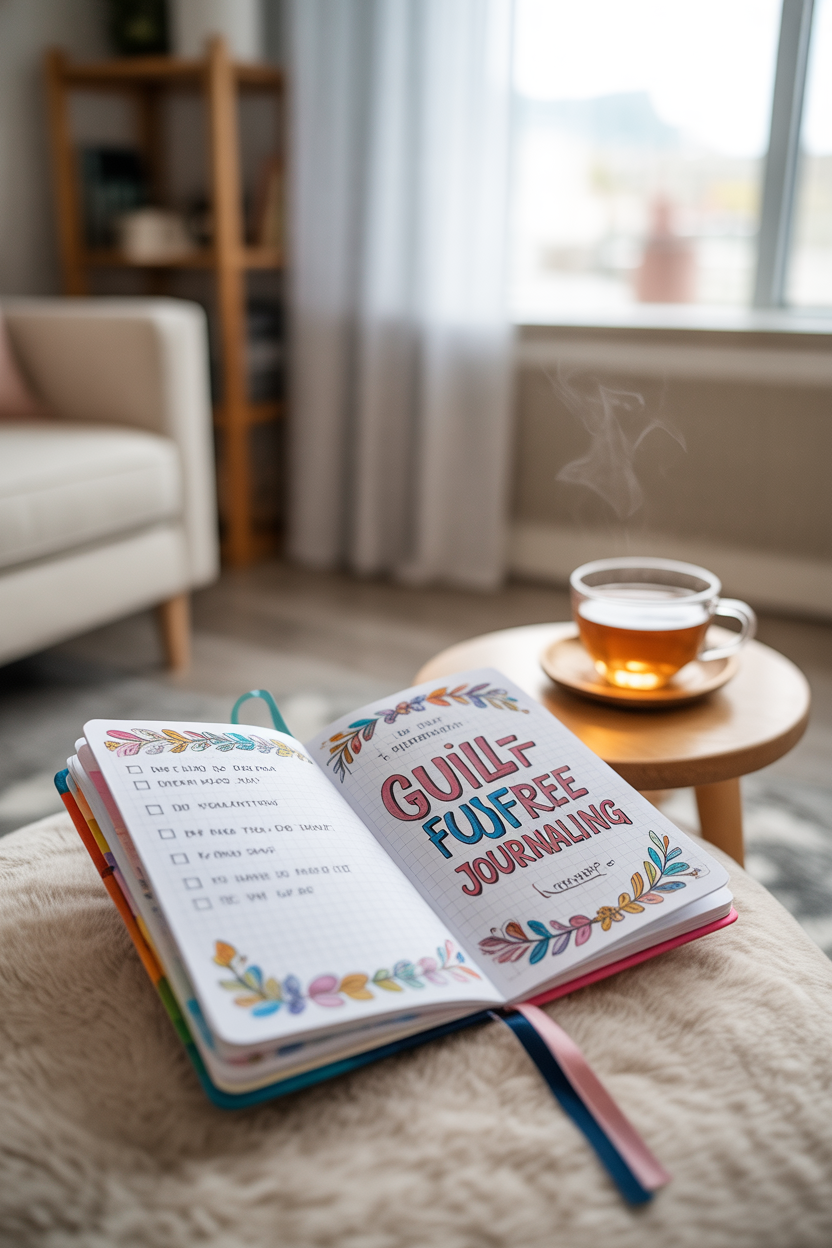
The top secret to sticking with your self-care bullet journal is to make it easy and entirely guilt-free. One of the best ways to do this is with “habit stacking.”
This technique, detailed by experts like James Clear, helps form new habits by linking your journaling time to something you already do. You can learn more about this simple but effective method to make it stick.
For instance, try doing your daily check-in while sipping your morning tea or right after you brush your teeth at night. Attaching the new habit to an existing one makes it almost automatic.
And what if you miss a day? Or a week? Or a month? Who cares! Your journal isn’t judging you, so there is no need to judge yourself.
There is no need to ‘catch up’ or feel bad. Just open it to a fresh page and start again, no apology necessary.
Discover Your Own Growth Through Gentle Reflection
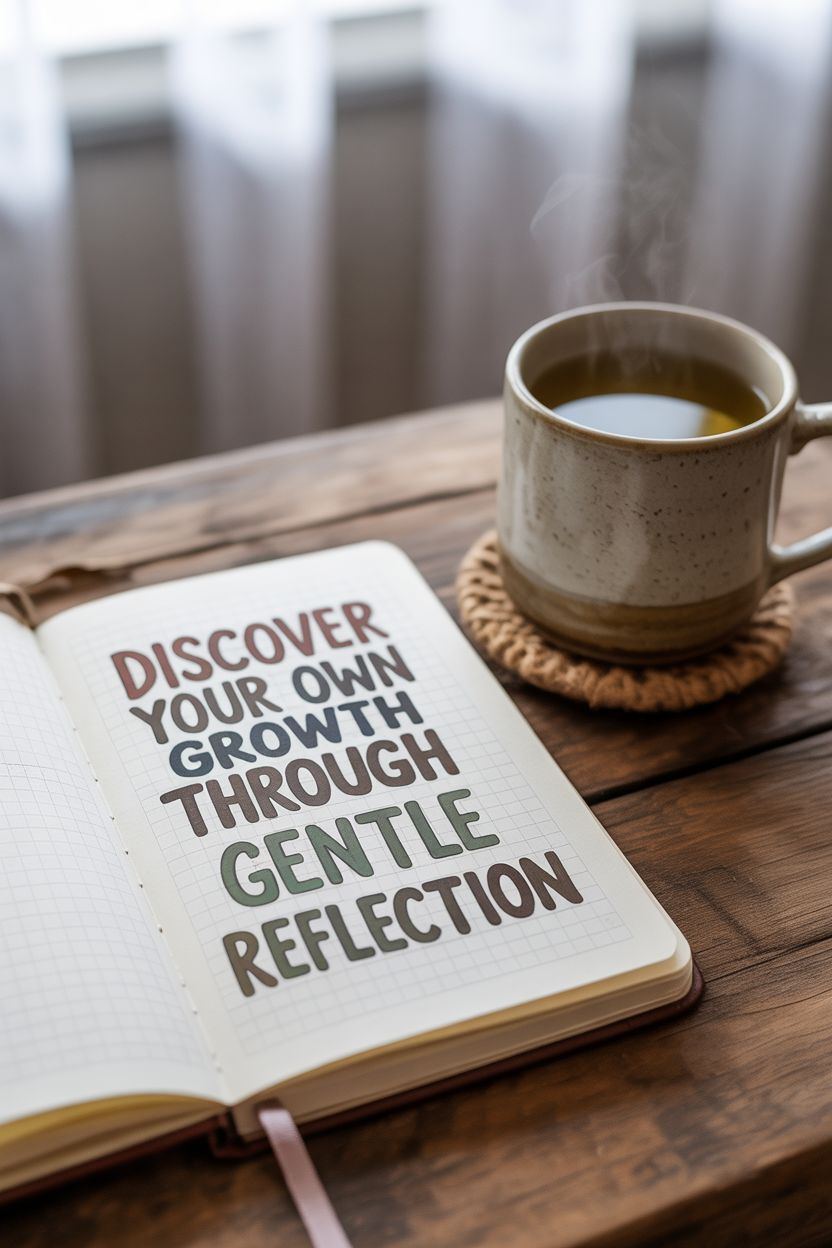
Every now and then, take a few minutes to flip back through your journal. This simple act of reflection is where the magic really happens.
This practice of regular review is highly recommended, as it allows you to identify patterns, troubleshoot challenges, and celebrate progress. You’ll see how far you’ve come.
It can be profoundly reassuring to look back and see the hurdles you have overcome. You’ll also be reminded of little moments of happiness you might have otherwise forgotten.
This regular review is a beautiful and tangible way to see your own growth. You get to witness your evolving journey, one scribbled page at a time.






